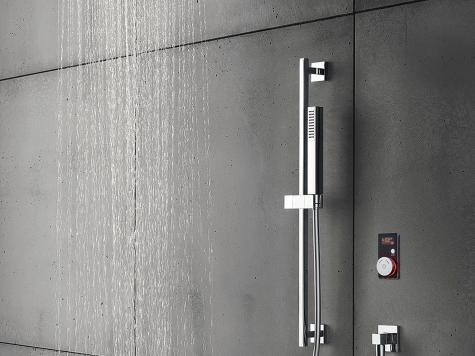
Eco-Friendly Fixtures

Courtesy of Blu Bathworks
They are often considered mere finishing touches chosen for convenience or aesthetics, but the fixtures in your home, including toilets, faucets, showerheads, and bathtubs, have a great impact on your water use. Once you buy the most eco-friendly models, do your best to use them responsibly. Don’t leave the water running longer than needed, take shorter showers, and consider incorporating gray-water systems.
Similar to Energy Star for appliances, there is a federal program sponsored by the Environmental Protection Agency called WaterSense, whose label indicates that a fixture has been certified by independent testing to meet strict water-saving requirements. According to the EPA, the average American uses about 100 gallons of water each day, and at least 36 states anticipate major water shortages by 2013. It is everyone’s responsibility to rein in water use to protect this natural resource, as shortages have a major impact on the environment as well as on food production, farming, and jobs.
Toilets account for approximately 30 to 40 percent of residential water use, so you will certainly see a difference in your water bill by upgrading to a low-water-use toilet. Replacing old toilets should be a high priority in your efforts to make your home more eco-friendly. Currently, federal mandates require that all new toilets use 1.6 gallons of water per flush or less. WaterSense-labeled toilets use 20 percent less water than that, or about 1.28 gallons per flush, and they must also perform well. Dual-flush toilets are becoming a popular way to save water. Push one button and the flush uses about 0.8 gallons for liquids or paper; push another button and it uses up to 1.6 gallons for solid waste.
